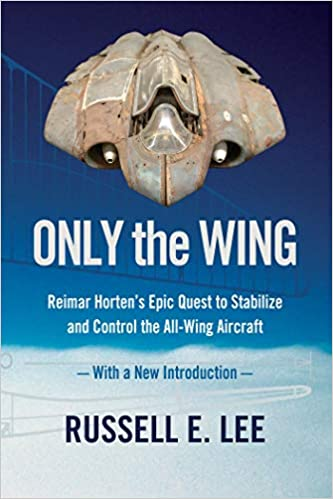Firebee
ACCESS: Confidential
- Joined
- 1 April 2011
- Messages
- 100
- Reaction score
- 9
I've been interested in the Horten (and all other flying wings) for a long while. This upcoming book about the Horten wings looks as if it may be very interesting.
From the publisher:
"In the late 1920s, Reimar Horton started experimenting with flying models equipped with fuselages, stabilizers, rudders, and elevators, but his life's work involved systematically removing these components from the models until he could achieve flight with only the wing. Not only were the pure wings more difficult to design with the stability and control needed to fly, they were harder to place in practical roles not already filled by conventional aircraft operating for less support and operational costs. Always seeking to increase performance and efficiency, Reimar adopted a multi-disciplinary approach after flying his first piloted wing in 1933, eventually breaking new ground in cockpit design and construction materials. His most important innovation was the unique pattern he developed to distribute the lift over his wings, the result of his efforts to refine the aerodynamic control of all-wing aircraft, often while working alone and in difficult circumstances. Two days after he passed away in 1993, the Royal Aeronautical Society awarded Reimar Horten the British Gold Medal for Outstanding Achievement in Aeronautics.
About the Author
Russell E. Lee is curator in the Aeronautics Division at the Smithsonian National Air and Space Museum."
$39.95 Cloth 1-9356230-3-6 / 978-1-9356230-3-8 April 28, 2011

Publisher website:
rlpgbooks.com
I've been lurking on the board for a while now. Finally joined up. Thanks, everyone!
From the publisher:
"In the late 1920s, Reimar Horton started experimenting with flying models equipped with fuselages, stabilizers, rudders, and elevators, but his life's work involved systematically removing these components from the models until he could achieve flight with only the wing. Not only were the pure wings more difficult to design with the stability and control needed to fly, they were harder to place in practical roles not already filled by conventional aircraft operating for less support and operational costs. Always seeking to increase performance and efficiency, Reimar adopted a multi-disciplinary approach after flying his first piloted wing in 1933, eventually breaking new ground in cockpit design and construction materials. His most important innovation was the unique pattern he developed to distribute the lift over his wings, the result of his efforts to refine the aerodynamic control of all-wing aircraft, often while working alone and in difficult circumstances. Two days after he passed away in 1993, the Royal Aeronautical Society awarded Reimar Horten the British Gold Medal for Outstanding Achievement in Aeronautics.
About the Author
Russell E. Lee is curator in the Aeronautics Division at the Smithsonian National Air and Space Museum."
$39.95 Cloth 1-9356230-3-6 / 978-1-9356230-3-8 April 28, 2011

Publisher website:
rlpgbooks.com
I've been lurking on the board for a while now. Finally joined up. Thanks, everyone!

